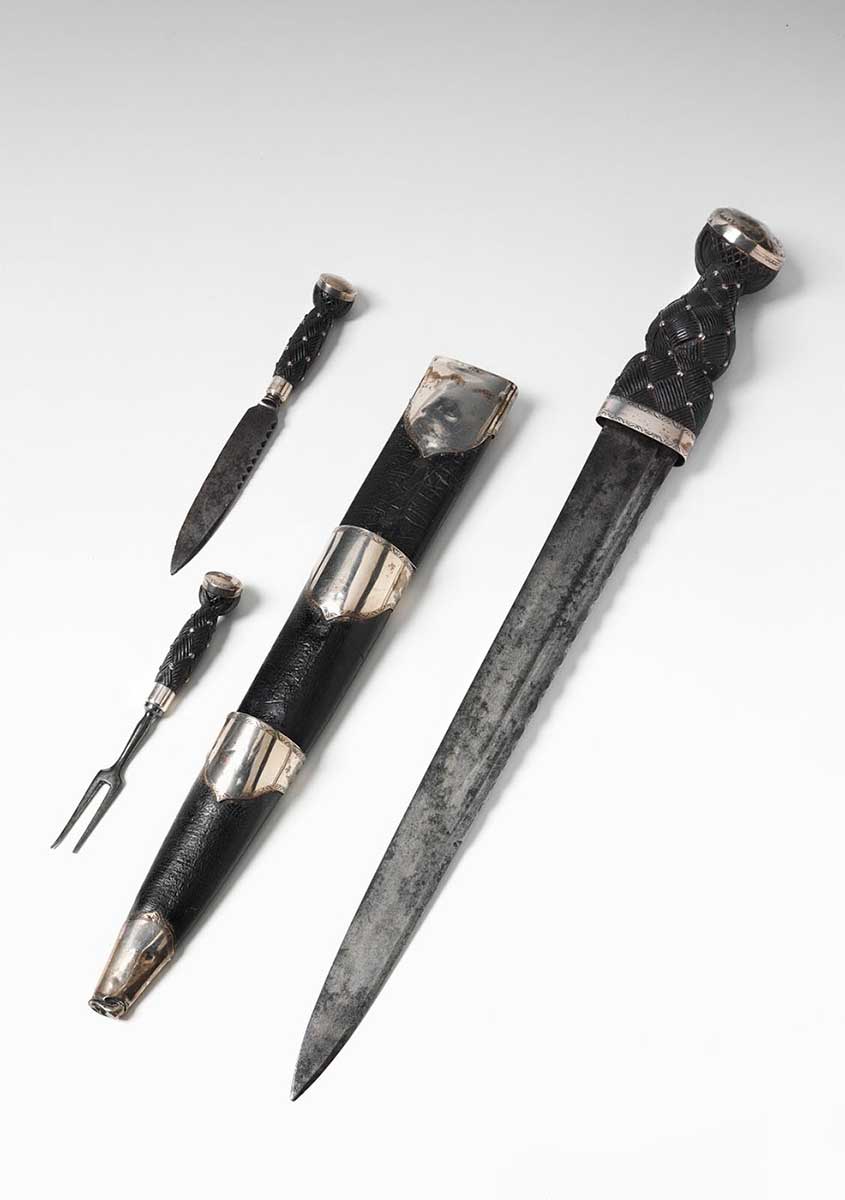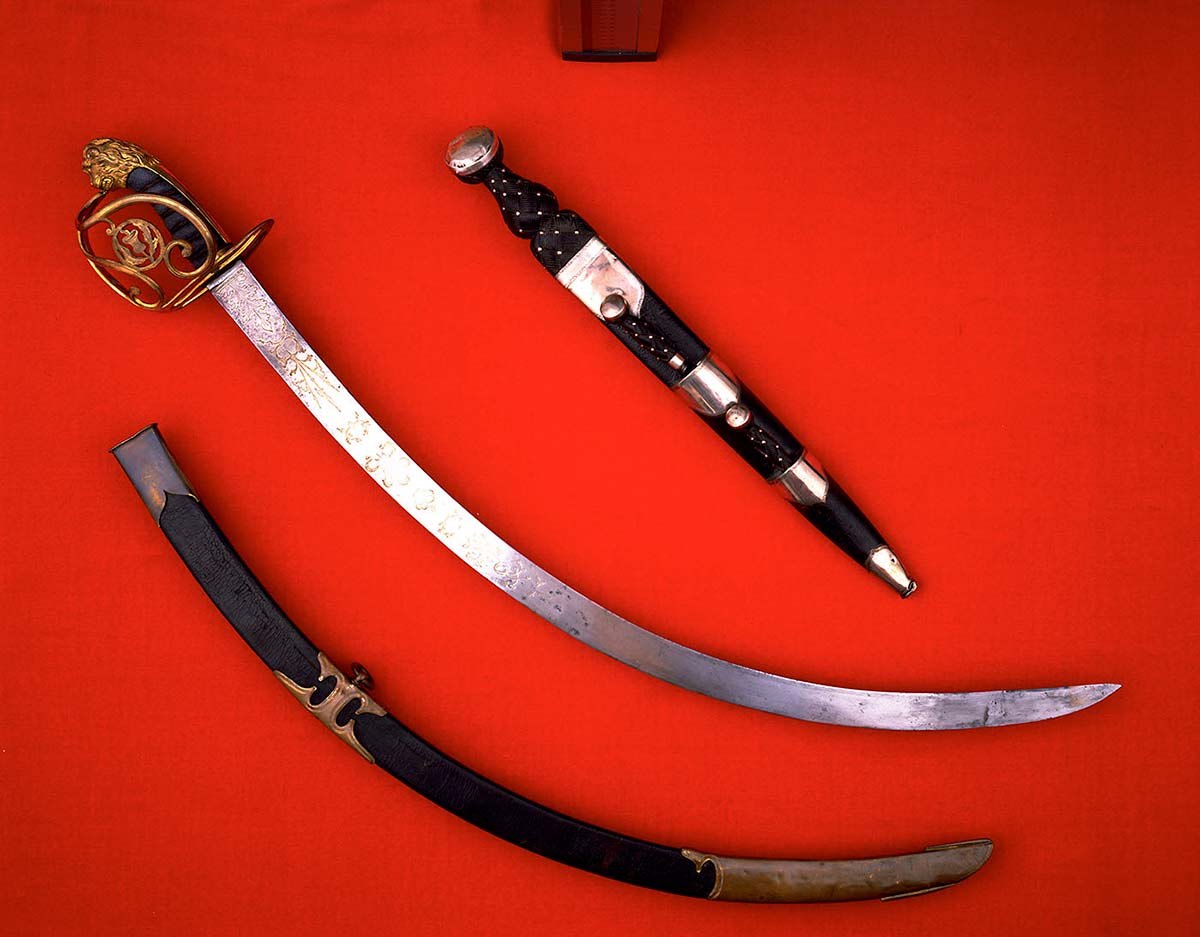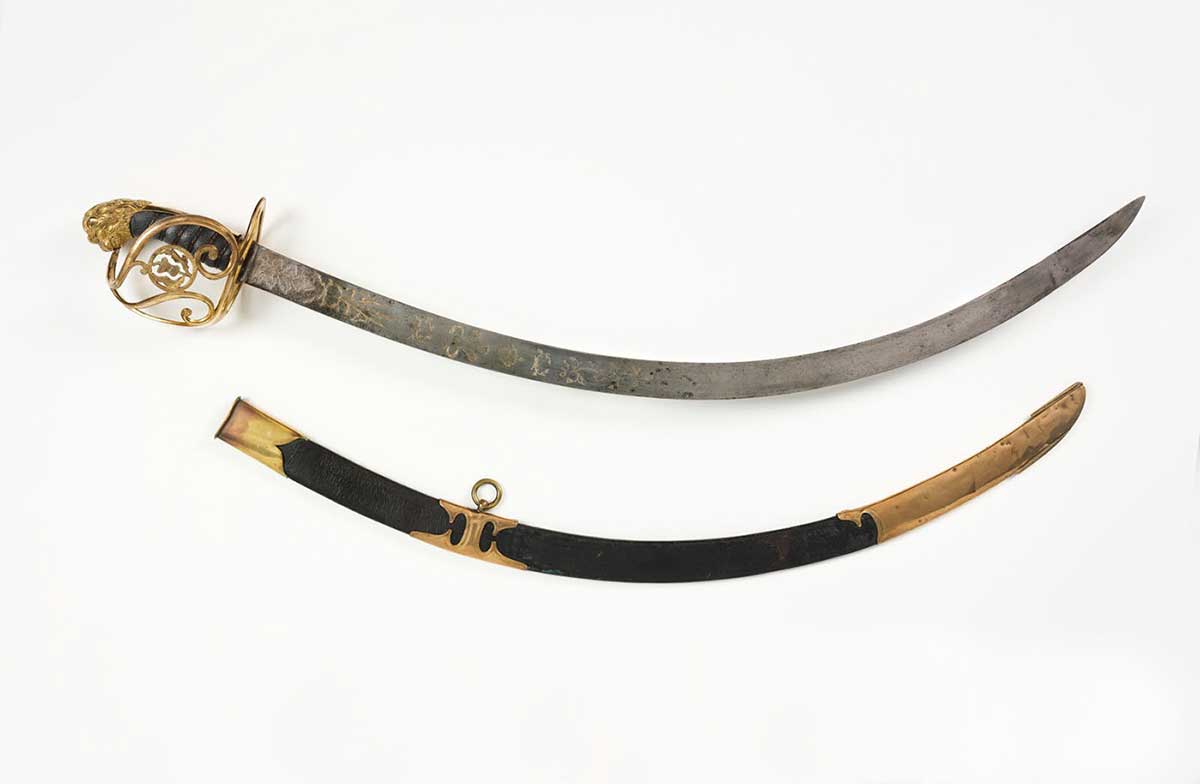In 1917 the widow of the 8th Viscount Strathallan offered the sword and dirk of Major General Lachlan Macquarie at auction in London.
They had come into the Strathallan family through James Drummond, Governor Macquarie's friend, executor of his will and guardian of his son Lachlan. Drummond had inherited the title of 6th Viscount Strathallan in 1824. Lady Strathallan supplied the auctioneer with a letter attesting to the weapons' provenance.
The successful bidder was Sir John Ferguson (1881–1969), bibliophile, collector, judge of the New South Wales Industrial Commission and author of the Bibliography of Australia, the standard reference for printed material relating to Australia published between 1784 and 1900.
Passionate about Australian history and dedicated to preserving the nation's cultural heritage, Ferguson valued the weapons for their association with one of Australia's most significant governors. In the 1960s he presented the sword and dirk to his son Alexander on his 21st birthday.
Celebration of Scottish heritage

Lachlan Macquarie (1762–1824) was a career soldier who served in North America, India and Egypt.
He returned to Britain in October 1807 and purchased his regimental sword from JJ Runkel, before travelling north to become Lieutenant Colonel of the 73rd regiment.
At this time, military and naval officers purchased their own swords, guided only by personal taste and cost.
Macquarie celebrated his Scottish heritage by choosing a sword with a Scottish-type or half-basket hilt with a decorative thistle relief and the number of his new regiment engraved on the main knuckle-bow.
Dirks, while no longer regulation army weapons by the 1800s, were worn by senior officers of Scottish regiments as clan insignia.
Bound for New South Wales
In late 1808 the 73rd regiment was chosen to replace the mutinous New South Wales Corps. After successful lobbying, Macquarie was appointed as Governor William Bligh's replacement in April 1809. Before sailing, he received confidential instructions from Castlereagh requiring him:
... to improve the Morals of the colonists, to encourage Marriage, to provide for Education, to prohibit the Use of Spirituous Liquors, [and] to increase the Agriculture and Stock, so as to ensure the Certainty of a full supply to the Inhabitants under all Circumstances.
... to improve the Morals of the colonists, to encourage Marriage, to provide for Education, to prohibit the Use of Spirituous Liquors, [and] to increase the Agriculture and Stock, so as to ensure the Certainty of a full supply to the Inhabitants under all Circumstances.
Macquarie began his term as Governor of New South Wales on 1 January 1810 and over the next decade he transformed the colony's infrastructure, economy and prospects.
His determination to rehabilitate the social status of 'reformed' convicts won him powerful enemies in the colony and in Britain, and in 1822 he sailed for London to defend himself against his critics. Fearing that his achievements would be eclipsed by the 'false, vindictive and malicious' report of the Bigge Commission, Macquarie battled to salvage his reputation.
He died in London on 1 July 1824, two months after a gruelling journey from Scotland to secure his pension.
On 5 June 1976 the weapons were offered at auction in Sydney. The Department of Home Affairs and Environment was authorised by the Prime Minister to bid up to $10,000. It purchased the weapons 'on behalf of the Australian people for inclusion in the national collection' for the sum of $7500. The sword is now part of the National Historical Collection.
In our collection

